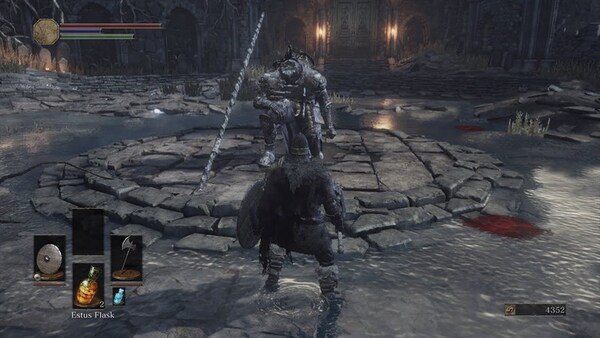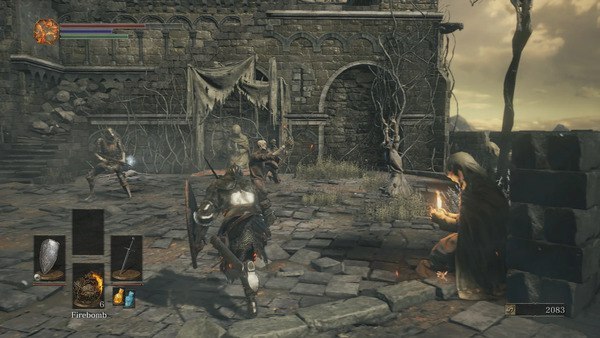Advertisement
Popular Now
Dark Souls III is not just a game; it's an experience steeped in rich lore, challenging gameplay, and meticulous design. For newcomers and veterans alike, the intricacies of this title can be daunting. This guide aims to provide a thorough understanding of the game’s mechanics, strategies for character development, and tips for conquering the many challenges you will face throughout your journey in Lothric.
Introduction
In Dark Souls III, every choice matters—from the character class you choose at the start to the equipment you wield in battle. The game rewards strategic planning, patient gameplay, and a willingness to learn from failure. By following the steps outlined in this guide, you’ll develop the skills necessary to navigate Lothric and ultimately succeed in your quest to link the fire.




 Every boss has unique attack patterns. Studying these can provide you with critical insights and openings for counterattacks.
Every boss has unique attack patterns. Studying these can provide you with critical insights and openings for counterattacks.
Understanding Character Creation

Choosing Your Class Wisely
The character class you choose will significantly influence your playstyle and overall experience in Dark Souls III. Each class comes with its own strengths, weaknesses, and starting gear.Overview of Classes
- Knight: A balanced class ideal for beginners, starting with a sword, shield, and decent armor.
- Warrior: Focuses on strength, making it perfect for heavy weapons and dealing high damage.
- Sorcerer: Excellent for magic users, starting with powerful spells and a focus on ranged attacks.
- Cleric: A hybrid class that can heal and fight, suitable for players who want versatility.
Tips for Class Selection
- Know Your Playstyle: If you prefer melee combat, classes like the Knight or Warrior are optimal. For magic, consider the Sorcerer or Cleric.
- Attributes Matter: Pay attention to starting attributes and gear. A class that suits your intended playstyle will make your journey smoother.
Customizing Your Character

Appearance and Starting Gift
After selecting your class, you can customize your character’s appearance and choose a starting gift. The starting gift can offer a vital early-game advantage.Recommended Starting Gifts
- Life Ring: Provides a health boost, essential for all playstyles.
- Fire Gem: Ideal for players planning to use fire-infused weapons.
- Young White Branch: Useful for stealth, allowing you to blend in with the environment.
Mastering Combat Mechanics
Understanding Stamina Management
Stamina management is critical for survival in Dark Souls III. Your stamina governs your ability to attack, dodge, and block. Poor management can lead to dire consequences.Tips for Stamina Management
- Dodge Smartly: Rolling consumes stamina; always keep enough for critical dodges.
- Block Wisely: Using a shield also drains stamina. Avoid excessive blocking, especially against heavy-hitting foes.
- Know Your Limits: Monitor your stamina bar during combat to avoid being left vulnerable.
Timing Your Attacks
Learning the timing of your attacks can significantly impact your effectiveness in battle. Mastering this can make the difference between victory and defeat.Techniques for Better Timing

- Light vs. Heavy Attacks: Use light attacks for speed and heavy attacks for power. Learn to mix both effectively.
- Backstabs and Parries: Executing backstabs and parries requires practice but can deal significant damage when mastered.
Leveling Up Effectively
Understanding the Leveling System
Leveling up allows you to allocate points to various attributes, enhancing your character's capabilities. Key attributes include:- Vitality: Increases your health pool.
- Attunement: Increases spell slots for magic users.
- Endurance: Boosts stamina and equip load.
- Strength/Dexterity: Influences weapon scaling and damage.
Prioritizing Attributes
- Focus on Your Build: If you’re melee-focused, prioritize Strength or Dexterity; for magic users, invest in Intelligence or Faith.
- Balance is Key: Don’t neglect Vitality and Endurance; they are crucial for survivability.
Utilizing Bonfires for Leveling
Bonfires serve as checkpoints, allowing you to level up, heal, and replenish items. Here’s how to maximize their use:- Resting at Bonfires: Always rest to refill your health and Estus flasks before venturing out.
- Fast Travel: Unlock fast travel to move quickly between bonfires, facilitating efficient exploration and leveling.
Exploring the World of Lothric

Learning the Map Layout
Understanding the layout of Lothric is vital for successful exploration. The world is interconnected, filled with secrets, shortcuts, and hidden paths.Key Areas to Focus On
- Firelink Shrine: The main hub for leveling, interacting with NPCs, and upgrading equipment.
- Lothric Castle: A crucial location with multiple paths leading to bosses and unique items.
- The Untended Graves: A hidden area that becomes accessible later in the game, containing tough enemies and lore.
Finding Items and Upgrades
Scattered throughout Lothric are weapons, armor, and items that enhance your capabilities. Here’s how to optimize your item collection:- Thorough Exploration: Always search for hidden paths; many valuable items lie off the beaten path.
- Interact with NPCs: Conversations with NPCs can unlock quests and provide useful items.
Mastering Boss Fights
Preparing for Boss Battles
Boss fights in Dark Souls III are among the most challenging aspects of the game. Preparation is crucial to overcoming these encounters.Gear Up Properly
- Upgrade Your Weapons: Ensure your weapon is upgraded to maximize damage output.
- Use Buffs and Consumables: Apply buffs like Charcoal Pine Resin to increase damage for the duration of the fight.
Learning Boss Patterns
 Every boss has unique attack patterns. Studying these can provide you with critical insights and openings for counterattacks.
Every boss has unique attack patterns. Studying these can provide you with critical insights and openings for counterattacks.
Techniques for Learning Patterns
- Observe Carefully: Spend the first moments of the fight learning the boss’s moves.
- Practice Dodging: Timing your dodges correctly can open up opportunities for counterattacks.
Co-op and PvP Strategies
Engaging in Co-op Play
Dark Souls III allows for cooperative play, letting players summon allies for challenging encounters. Here’s how to maximize your co-op experience:Summoning Allies
- Use the White Sign Soapstone: Place your summon sign in areas where other players are likely to seek help.
- Stay Coordinated: Communication and teamwork are essential for success.
Participating in PvP
Player versus Player (PvP) combat adds an extra layer of challenge. Here are some strategies for effective PvP:- Know Your Build: Understand your character's strengths and weaknesses in PvP situations.
- Timing and Distance: Maintain distance to avoid being caught off guard; utilize ranged attacks when necessary.
Crafting the Perfect Build
Understanding Build Types
Creating a successful build in Dark Souls III involves understanding character mechanics. Common build types include:- Strength Build: Focuses on heavy weapons and deals high damage.
- Dexterity Build: Emphasizes speed and finesse, utilizing lighter weapons.
- Magic Build: Centers on sorceries and miracles for ranged combat.
Customizing Your Build
- Choose Weapons Wisely: Select weapons that scale effectively with your chosen attributes.
- Armor and Equipment: Pay attention to your equip load to balance protection and mobility.
Adapting to Challenges
As you progress, you may encounter challenges that require adjustments to your build. Here’s how to adapt effectively:- Experiment with Weapons: Try different weapons to find what suits your style best.
- Respec Options: Utilize the respec option available through a specific NPC to reallocate attributes as needed.
Managing Resources
Understanding Estus Flasks
Estus Flasks are essential for healing. Managing these resources effectively is critical for survival.Tips for Managing Estus
- Allocate Wisely: Determine whether to prioritize healing or magic replenishment based on your build.
- Use Healing Items: Keep healing items in your inventory for emergencies.
Collecting Souls
Souls serve as currency in Dark Souls III, used for leveling up and purchasing items. Here’s how to optimize soul collection:- Defeat Enemies: Regularly defeat enemies to gather souls.
- Explore Thoroughly: Look for hidden areas containing valuable soul items.
Conclusion: Mastering Dark Souls III
Mastering Dark Souls III requires patience, strategic planning, and an understanding of its mechanics. Each aspect of the game interconnects, demanding adaptability and a willingness to learn from failures. By following this guide, players can navigate the trials of Lothric, enhancing their skills and strategies to emerge victorious in a world fraught with danger.Final Tips for Success
- Practice Makes Perfect: Don’t be discouraged by failure; each setback is a chance to learn.
- Engage with the Community: Join forums and discussions to gain insights from other players.



















